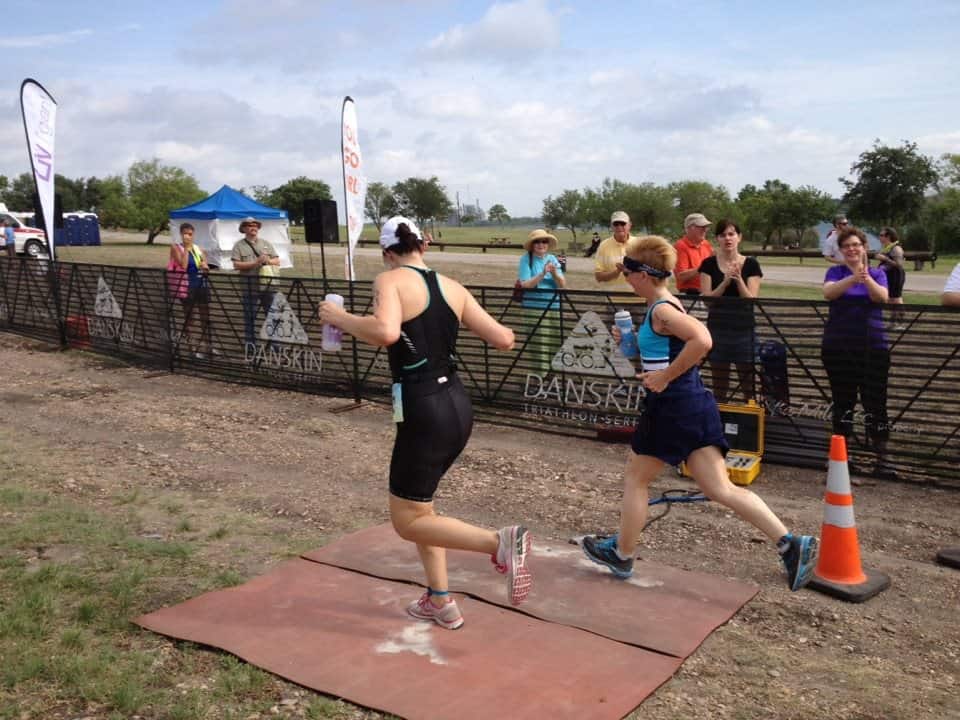
Exercise is an important part of diabetes management, and it’s helpful to know the different recommendations for exercise and diabetes.
Whether you have type 1 diabetes, type 2 diabetes, or another form of diabetes, exercise has likely been recommended at some point. And both experienced athletes and beginners to exercise need to understand the effects of exercise and diabetes.
Blood sugar and exercise: how do they impact each other?
Exercise can lower blood sugar both immediately and long term.
How does exercise help diabetes management day-to-day?
- When you exercise, your muscle cells are more efficient at using insulin (removing glucose from the blood stream) both during exercise and immediately after. Another way of saying this is that exercise increases insulin sensitivity while you exercise and for an unspecified period of time afterwards. How long that period of time after exercise ends lasts, is dependent on several factors.
- During exercise, your muscle cells contract and can use glucose without insulin.
How does exercise affect diabetes long term?
So, when you are active regularly and consistently, most people with diabetes will see lower HgbA1c levels because of the consistent lowering of blood sugar and increased insulin sensitivity during activity.
***This article is not intended to provide medical advice, diagnosis, opinion, treatment or services. This article and the links contained in it provide general information for educational purposes only. The information provided in this article is not a substitute for medical care. It should not be used in place of the advice of your physician or registered dietitian.***

Physical activity recommendations for people with diabetes
While the recommendations are similar, there are some differences between exercise recommendations for type 1 and type 2 diabetes. And as always, you should check with your doctor before starting any new physical activity plans.
Exercise and type 1 diabetes
- Most people with type 1 diabetes will benefit from regular exercise, and regular activity should be recommended to all. Both aerobic exercise and strength training are recommended.
- Each person with type 1 diabetes will respond differently to exercise and to different types of exercise. Adjustments to carbohydrate intake and insulin doses will need to be made to accommodate exercise.
- Continuous glucose monitoring can be used to detect potential low blood sugars.
Type 2 diabetes and exercise
- People with type 2 diabetes are encouraged to participate in 150 minutes of physical activity each week, and to not go more than two days in between physical activity sessions.
- Both aerobic exercise and strength training are encouraged.
Where to look for diabetes and exercise guidelines
While there are many resources available on the internet, your first resource for deciding what physical activity and exercise guidelines to follow should be your personal healthcare team. Exercise and diabetes comes with unique considerations for each person with diabetes.
What is the role of exercise in diabetes management?
As we discussed, exercise plays an important role in helping to maintain stable blood sugar levels within recommended ranges, and in lower blood sugar levels over time.
What is the best exercise for people with diabetes?
There are two things to consider when deciding what type of exercise is best:
- Is it safe for you to do?
- Do you enjoy it?
And this is no different for people with diabetes. Remember, exercise and diabetes is about managing blood sugars and improving your health long term. So, if you’re not enjoying the activity you’re doing for exercise, it’s time to find something else. Here are a few ideas to consider for exercise…
- Walking
- Jogging or running
- Riding a bike or taking spin classes
- Dancing
- Swimming
- Playing a sport like basketball or soccer
- Lifting weights/strength training
- Yoga classes
- Stretching
- Pilates classes
- HIT workouts (high intensity training)
- Roller blading

Make sure to check with your doctor or healthcare team before starting one of these activities though. They will be able to best advise you on what is safe for your unique situation. Any existing diabetes complications or injuries will impact what is safe for you to do.
What is the best time to exercise for diabetes?
You should exercise at a time of day that works for your schedule and lifestyle. Try to shoot for a time of day when you have the most energy and will be able to put proper effort into your exercise. And do not exercise on an empty stomach. It’s important to fuel yourself properly both before and after physical activity.
When should someone with diabetes not exercise?
Because of the risk that comes with exercise and diabetes, there are some times when people with diabetes should not exercise:
- Blood sugar is less than 100mg/dL. Eat 15-30g of carbohydrate to raise your blood sugar above 100mg/dL, and wait 15 minutes before beginning exercise.
- Blood sugar is greater than 250mg/dL. Check for ketones, drink adequate fluids, and take medications as needed and as prescribed by your doctor to lower your blood sugar. Do not exercise until your blood sugar is under 250mg/dL.
- You have ketones. Follow the treatment guidelines given to you by your doctor and do not exercise.
- You have certain diabetes complications like retinopathy or neuropathy. These conditions may limit the activities you can do safely.
- You feel ill or sick.
Safety tips when considering exercise and diabetes
- Keep low blood sugar treatment with you at all times. Rapid acting treatments such as honey, glucose tabs, fruit snacks, etc. are best.
- Always have a way to test your blood sugar with you, even if you wear a continuous glucose monitor.
- If exercise lasts more than an hour, test your blood sugar at regular intervals during exercise.
- If taking insulin before exercise, do not inject the insulin in an area of the body where you will be using your muscles most.
- Test your blood sugar regularly for a few hours after finishing exercising to ensure you do not drop low.
- Always wear a medical ID.
Want more practical real life advice for managing your diabetes? Check out my Diabetes 101 headquarters for everything you need to know about living a happy and fulfilled life with diabetes!


















One Response
Hi Mary Ellen,
My blood sugar does the opposite…it goes up during exercise. I was wondering if you thought this might be a problem. My workouts are at 10 am a couple days a week with a trainer. I have a natural morning rise to between 140 and 150 every day but on workout days it can go over 180. I read the article on the ADA website but thought you might have some additional insights.
Thanks!